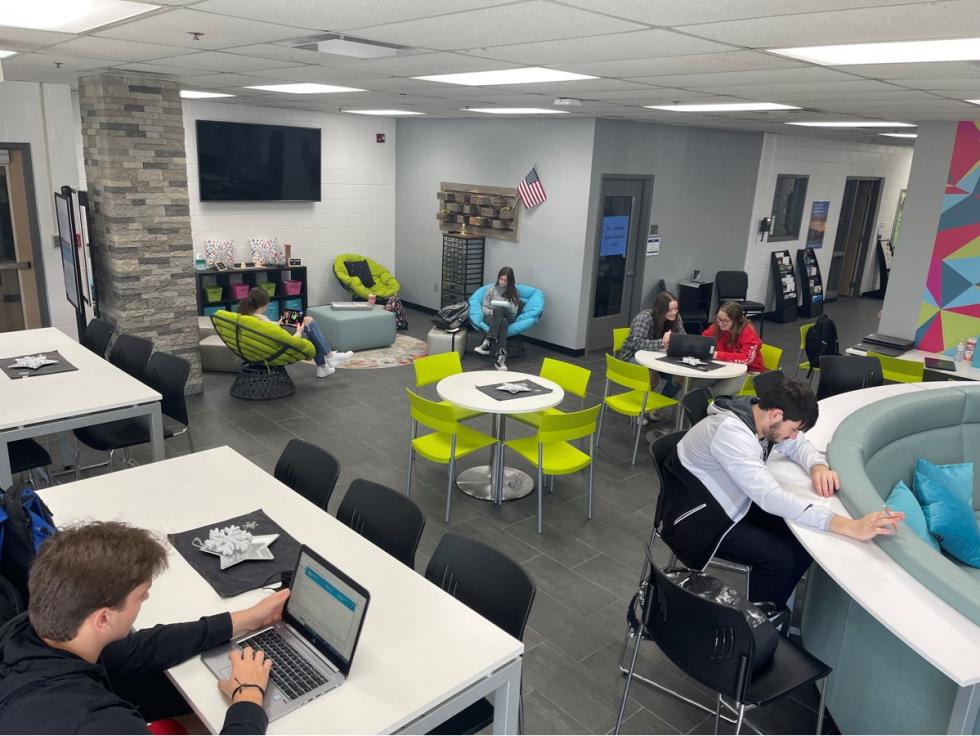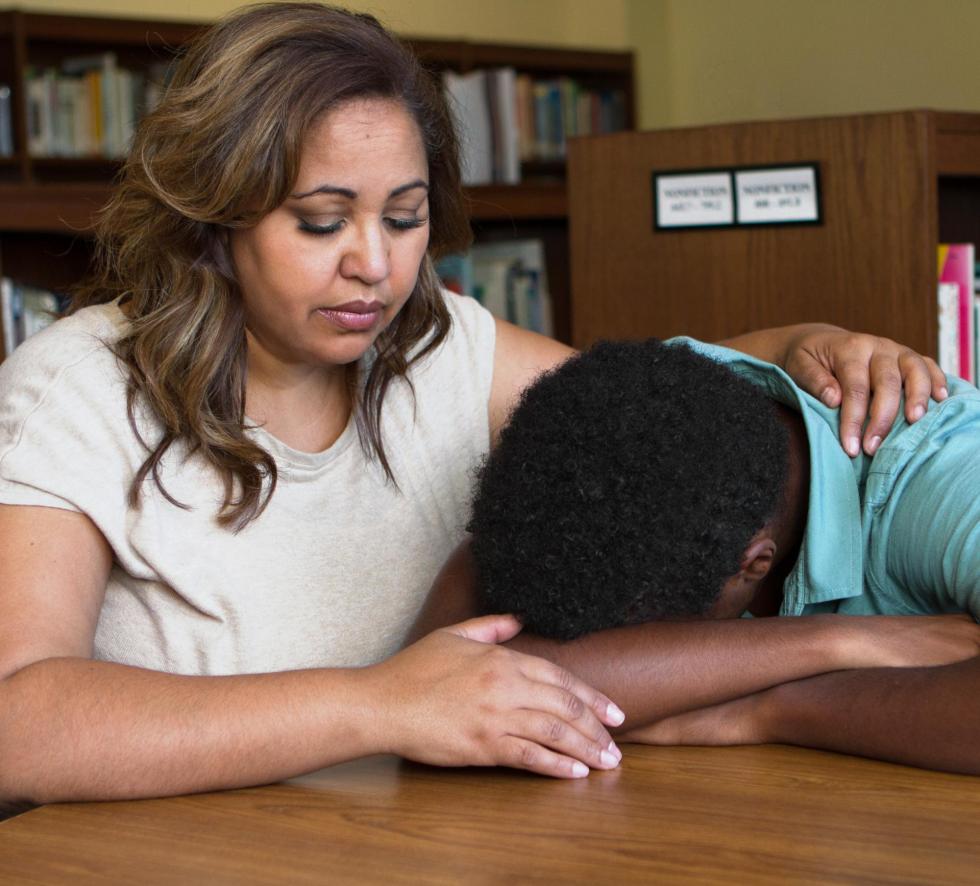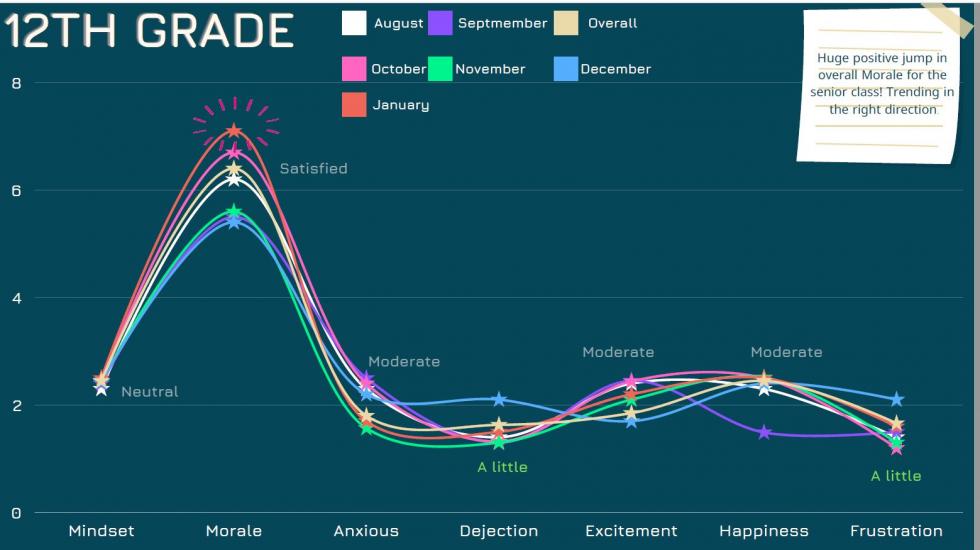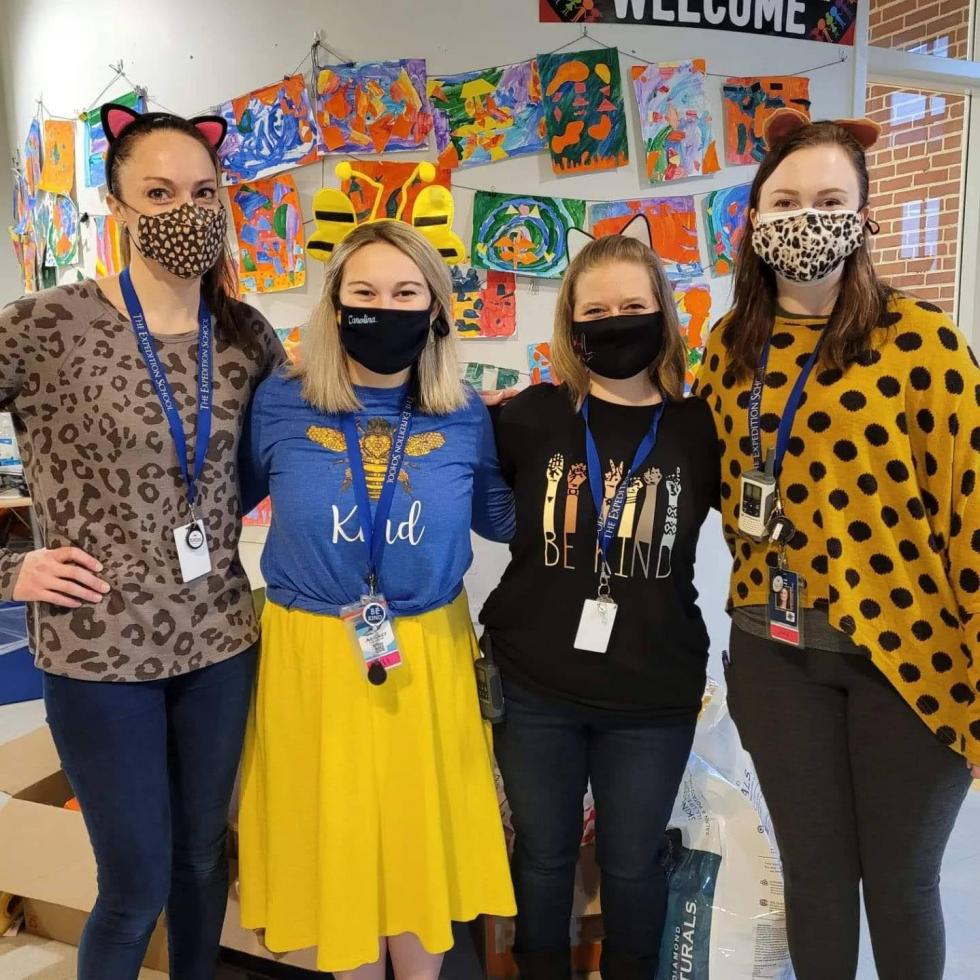How Schools Are Addressing Students’ Mental Health and Wellness
Good mental health is essential to students’ success in school, a fact every school administrator knows all too well as we enter a third year of the COVID-19 pandemic. After a year or more of online learning and social isolation, the return to school has triggered anxiety and depression and slowed or regressed maturation for many children.
Consider this: A current second grader’s last normal school year was pre-K, a ninth grader’s was sixth grade, and a senior’s was ninth grade. Framed in this way, the social, emotional and learning losses students have experienced are almost inconceivable.
 “That’s huge and students will have
to make huge adjustments,” because of COVID, says Nzinga Benton,
a licensed professional counselor in Atlanta.
Experts also say students are showing signs of developmental
and behavioral regression. For example, an 8-year-old who once
sat still, read and played with Legos now moves around a lot and
seemingly can’t sit still.
“That’s huge and students will have
to make huge adjustments,” because of COVID, says Nzinga Benton,
a licensed professional counselor in Atlanta.
Experts also say students are showing signs of developmental
and behavioral regression. For example, an 8-year-old who once
sat still, read and played with Legos now moves around a lot and
seemingly can’t sit still.
Benton says disruptions to students’ normal day-to-day flow caused by the isolation of virtual learning have been traumatic. She notes many are suffering from fear, anxiety and stress, and it will take adult help for them to get over it. She advises teachers to get a glimpse into how children are doing by simply asking questions like, “How are you feeling today?” or “Is there anything I can do to help you have a great day?” Ask and “wait for the answer,” she insists.
Why Mental Health Matters
Addressing students’ mental health needs in school is important because one in five children have a diagnosable emotional, behavioral or mental health disorder, according to the Association for Children’s Mental Health. Nationally, more than 50% of students aged 14 and older who suffer with these problems drop out of high school.
What Schools Can Do
Benton urges schools to normalize conversations about students’ physical, mental and emotional well-being in school. They can do this by educating parents, students and staff about the symptoms and warning signs of emotional distress as well as the help that’s available in the school and the surrounding community. However, reaching parents is not always easy. As Benton relates, many aren’t able to attend parent-teacher conferences or parent-teacher-student organization meetings. Instead, schools can reach parents where they are by using social media and making TikTok or YouTube videos on health and well-being. “If that’s how we get to them, then that’s how we get to them. The goal is to get to them,” Benton insists.
In Part 2 of our two-part series on students’ mental health and wellness, we look at how districts and schools in West Virginia and North Carolina are using programs and curricula to proactively gauge and respond students’ mental health needs before they become crises.
Tyler County Schools in West Virginia
Tyler County School District in Middlebourne, West Virginia, serves 1,235 students in grades preK-12 at two elementary schools and the middle and high schools that share a consolidated campus. Since reopening this school year, district staff report an increase in incidences of emotional distress, social anxiety, absenteeism and low motivation and enthusiasm among students.
 For many students, having missed so
many regular activities like prom or athletics during the
pandemic, “nobody sees any use of getting their hopes up for
anything,” says Mark Winters, the student success coach. After a
year or more of social withdrawal, some students are even opting
to complete their classwork in the kinds of isolated settings
typically reserved for in-school suspensions rather than stay in
class with their peers.
For many students, having missed so
many regular activities like prom or athletics during the
pandemic, “nobody sees any use of getting their hopes up for
anything,” says Mark Winters, the student success coach. After a
year or more of social withdrawal, some students are even opting
to complete their classwork in the kinds of isolated settings
typically reserved for in-school suspensions rather than stay in
class with their peers.
“There’s a lot of fear too, especially among kids with disabilities,” notes Cami Williamson, the countywide school social worker. She notes that many students are afraid of COVID and getting close to people.
Weekly Mental Wellness Assessment
In February 2021, the school district was the first to pilot a program from MetaNu,* a care-based business that takes a positive proactive approach to mental health and wellness. The program provides the school with a secure website through which all students and staff in grades six through 12 create a profile and log into the site weekly to take a well-being assessment.
Seven elements of mental wellness are measured: mindset, morale, anxiousness, dejection, excitement, happiness and frustration. Based on the results, each student or staff member receives a personalized reflection that may include proactive tips for improving their well-being — these might include calming breathing techniques, goal setting activities or interactive worksheets on a topic of personal concern, for example.
If a student’s or teacher’s answer to questions suggests they are struggling with suicidal thoughts or self-harming, resources like a crisis line pop up on their screens. Winters and Williamson, the MetaNu contacts in the district, are also immediately notified. “We’ve been able to identify students who need additional supports through the MetaNu program,” notes Winters.
School Culture Assessment
When students and teachers submit their weekly assessments, their data are organized into a “culture calculator” that shows overall group data and tracks trends in measured emotions. A morale meter displays the overall school or grade-level culture. Leadership teams use these data to identify needs and make informed decisions. The program even features a mental health curriculum driven by individual assessment data that students can access through the website.
Student Success Center
 Another district program that’s
getting rave reviews is their Student Success
Center, an inviting area housed at the consolidated
middle and high school campus where students can feel comfortable
seeking services.
Another district program that’s
getting rave reviews is their Student Success
Center, an inviting area housed at the consolidated
middle and high school campus where students can feel comfortable
seeking services.
The center houses a guidance counselor, psychologist, student success coach, behavioral health counselor and staff from Harmony Mental Health, a district-contracted outside agency that provides therapists who treat student clients during the school day. Before the pandemic, the district had one counselor who serviced both elementary schools. Since COVID, Williamson says that students’ mental health needs grew so great, the district added a second therapist to its elementary schools and created Winters’ position as student success coach at the consolidated middle and high school.
Located in the center is a supply room in which students can freely obtain needed school supplies, hygiene products and nonperishable food items. “It’s a room every kid can go in, with no questions asked, and get what they need,” says Williamson.
The Student Success Center was made possible by the Elementary and Secondary School Emergency Relief Fund, passed by Congress to help schools safely reopen during the pandemic. Its goal is to provide direct support to students so they can reach their potential.
Contacts: Mark Winters, mwinters@k12.wv.us, and Cami Williamson, merri.williamson@k12.wv.us.
The Expedition School
Located in Hillsborough, North Carolina, the Expedition School is a public charter that serves 360 students in grades K-8. Although the school has always sought to proactively address students’ physical, mental and emotional well-being, school counseling referrals related to anxiety, grief and loss have increased since the pandemic, says Jessie Roney, a licensed school counselor and student services coordinator at the school.
Beginning in July 2021, the state required all K-12 schools to adopt and implement a school-based mental health plan that includes mental health training and a suicide risk referral protocol ensuring that the school was more compliant in best practices for addressing student mental health.
Counseling Support
As a counselor, Roney implements supplemental lessons and support through classroom guidance, small group counseling and individual counseling. She also implements targeted interventions with students:
- CICO,* check-in and check-out, is a daily intervention program that provides students with feedback about their state of mind and promotes positive behaviors.
- Coping Cat* is a cognitive-behavioral treatment curriculum that reduces anxiety.
- CODIP,* the Children of Divorce Intervention Program, helps children cope with challenging family changes.
The school also contracts with an agency so a school based-therapist can visit once a week.
Roney says that anxiety, grief and loss have affected some students very badly, resulting in a much higher than average number of risk assessments. When these occur, the school follows the state suicide risk screening protocol and assesses students in crisis to determine their risk of harming themselves or others. If needed, struggling students are referred to a mental health professional for long-term care.
Schoolwide Supports
The need for student supports goes beyond the counselor’s or therapist’s offices. The Expedition School takes a schoolwide, student-centered approach to physical, mental and emotional well-being with resources like these:
The school uses the Second Step Curriculum,* a research-based program that promotes healthy social and emotional development. All teachers have weekly lessons on topics like how students can make friends, speak up for themselves or identify and prevent bullying.
In a Responsive Classroom, each day begins with a morning meeting and ends with a closing circle in which students reflect on their days. Roney says this routine helps reduce anxiety and enables teachers to “know how to respond to and redirect students in the moment. [It] has created a more positive environment.”
The Expedition School plans to implement DESSA,* a social-emotional learning tool that assesses student needs and empowers educators to create data-driven interventions.
Schoolwide initiatives like Kindness Week foster positive emotions and encourage students and staff to show gratitude for themselves, each other and even animal friends.
Research shows that when students’ physical, mental and emotional health is addressed in schools, students experience greater academic success, fewer behavioral problems and higher levels of prosocial behaviors.
Contact: Jessie Roney, jessicaroney@theexpeditionschool.com.
Read Part 1 of this two-part series.
* Curricula or programs used by schools or districts mentioned in this blog have not been endorsed by SREB.




